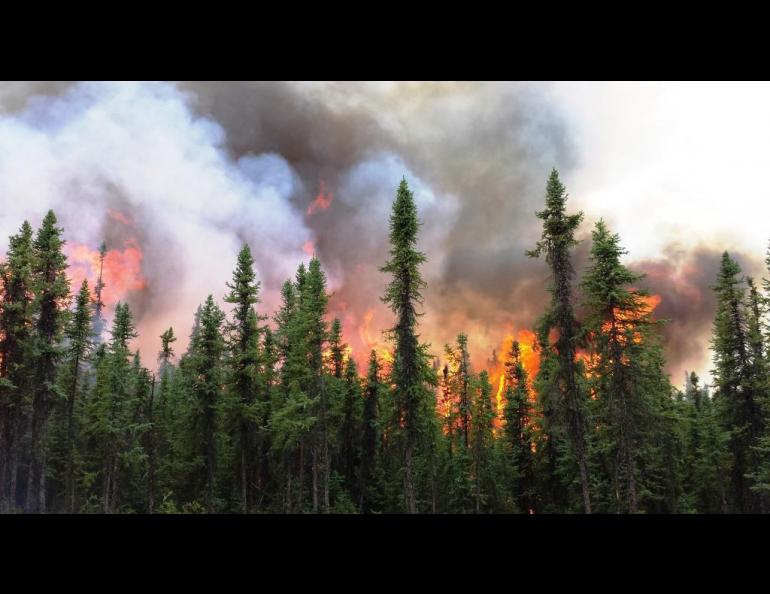

Hot topic: Forecasting wildfires in Alaska
Researchers at the University of Alaska Fairbanks soon may forecast the likelihood of Alaska wildfires more accurately, just in time for the upcoming fire season.
The new method, which they presented this week at the American Geophysical Union, aims to predict higher or lower fire activity during the summer. Predictive tools exist in the Lower 48, but this is one of the first seasonal forecasting products of its kind in Alaska.
These predictions are important for fire managers in Alaska, because they share firefighters, supplies and other assets with the Lower 48. In early March, they begin allocating these resources.
“The fire managers need some idea of what’s going to happen during the summer,” said lead presenter Uma Bhatt. “This was driven by a fire manager need, even though it’s a very hard question to ask of a seasonal forecast.”
The need has grown more evident in recent years. Based on records going back to the 1940s, four of the 10 largest fire seasons have happened in the past 14 years. An early snowmelt followed by a long period of warm, dry conditions in remote areas with limited fire management can spell disaster.
Currently there are no seasonal forecasts in place. Researchers hope to identify what is needed to create an accurate forecast.
“It has to be forecasting something that’s the truth,” Bhatt said. “That’s a real issue in Alaska.”
One of the biggest challenges, other than gathering information, has been the lack of high-quality observational data. This has caused the project to evolve over time.
“When we started, we thought we’d have a spatial map that showed what the fires were going to be like,” said Bhatt, a researcher with UAF’s Geophysical Institute and a professor of atmospheric sciences for the College of Natural Science and Mathematics. “But then it became clear that we don’t have very good observational data everywhere in Alaska.”
At present, the project is branching out into more fire-forecasting products.
One is a map of daily temperatures for every area in Alaska, instead of only where the meteorological stations are.
The other is a project that looks into climate analysis to find clues for forecasting Alaska wildfires. This will also create an updated fuels map, which will help fire managers decide which fires to respond to. A fire in a location with a small amount of fuel likely would be a lower priority than one with a lot of fuel available. The work is funded by the National Science Foundation through the Alaska Established Program to Stimulate Competitive Research.
“Because we were working with fire managers, who are closely linked with the fire community, they were constantly prodding us,” Bhatt said. “And that back-and-forth is really important. We can do the calculations, but the needs are constantly driving what we are doing.
“And the balance is between what is scientifically possible and what we need. Working with those things together is very challenging but very satisfying.”
Tanya Clayton, 907-474-7541






